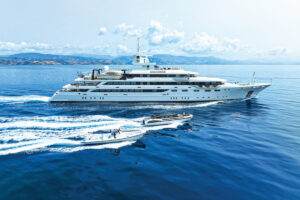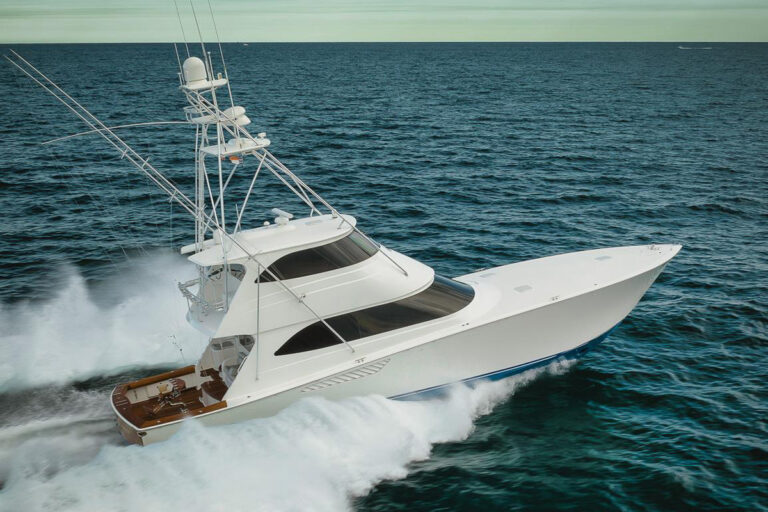I first clapped eyes on the Sassafras River at the end of a long sail up Chesapeake Bay. I hated it. I was 10 and hoping for action, but this was the back of beyond.
My brother and I were plotting our escape when Betterton Beach on the river’s southern shore hove into view. It looked like salvation. But Pop plowed on, bound for an ambience-rich dinner at The Granary, 10 interminable miles upriver. By the time we got there, The Granary was closed. We ate peanut butter crackers on the boat. So much for ambience.
Now, I live at the back of beyond and love it. On busy summer weekends, the area doesn’t seem nearly remote enough, though mid-week, it’s peaceful. The river’s surrounding farms go back to land grants from King Charles II. And though the Sassafras eventually leads to the shops, eateries and historical charm of the Georgetown/Fredericktown area, it still boasts grass-fringed creeks, thickets of white-flowered shadblow and dogwood, ospreys, bald eagles and great blue herons that stand like painted statues in the shallows.
More than 14 miles long, the Sassafras divides easily into two parts: the 8-square-mile entrance bay and the serpentine river proper. Navigating the Sassafras is easy, with the channel’s controlling depth of 13 feet. Just give most shorelines and buoys, many of which sit on the shoals they mark, a generous berth. There are lots of places to anchor. The entrance bay, while unprotected, is great for hot, sticky nights.
Five miles east of the mouth (at R2), the river proper squeezes down to a half-mile wide and is punctuated with little switchback creeks. Although the interiors of many are silted in, most accommodate 5 to 6 feet of draft in their mouths, and two are commodious enough for a rafted cruise.
Turner’s Creek, in the crook of the first bend, is completely protected. Inside the 6-foot deep basin are a public bulkhead, a dock, a ramp and the Lathim House, a restored colonial trading post that gives you a taste of the area’s heritage. Just up the road, the Kent Agricultural Museum displays antique farm equipment. In between are historic trees, among them the Betsy Ross Sycamore, the Minuteman Red Maple and the Moon Sycamore, whose seed traveled to the moon and back in an Apollo flight. (We love history here. What we don’t already have, we import.)
The second largish anchorage is Back Creek, about 2 miles northeast of Turner’s, tucked behind Knight’s Island (which is actually a peninsula). Comfortably open to the prevailing breezes, Back Creek boasts Mount Harmon, a restored tobacco plantation, on the neck between Forman and McGill creeks. The lovely three-story manor, obscured by trees, is a quirky combination of 18th-century elegance and modern eccentricity, including a bathroom with a sunken tub and a mural right out of “The Jungle Book.” Open for tours, the house is a mile’s walk from the nearly 300-year-old Tobacco Prize House, the unassuming shed on the bulkheaded shore.
For the next couple of upriver miles, the scenery is mostly pastoral, but it becomes commercial about a half-mile from the drawbridge at Georgetown. Five marinas line the north shore, and another dominates the south. All welcome transients, and most offer complimentary transportation to Galena, a mile away. There, you’ll find banks, booze, a pharmacy, antiques shops and Otwell’s Market.
Although Georgetown looks commercial, at heart, it’s a small town. People are friendly. The dress code in local restaurants is informal. Signals Pub at Skipjack Cove serves light fare on the deck. Sassafras Harbor Marina’s Harbor Cafe and Pizzeria serves pizza, large salads and subs. The new Granary, rebuilt after a fire, lacks the ambience of the original but boasts great food and a lovely river view. Below it, the Sassafras Grill, a Margaritaville wannabe, serves conch fritters and shrimp jammers.
Georgetown, named a Port of Entry in 1695, was a thriving distribution center for surrounding farms until the War of 1812, when the British made the Sassafras a stop. The HMS Marlborough rowed to Fort Duffy (now the site of Duffy Creek Marina). Admiral Cockburn said that if the townspeople offered no resistance, the soldiers would leave them in peace (but little else). The local militia fired, and the British razed the town.
To save a house and the invalid woman inside, a woman named Kitty Knight blocked the doorway. Taken with her courage and beauty, Cockburn left the house intact. It’s now gone, but Kitty’s rambling brick home remains, as does an ambience I could not have imagined when I first saw the river all those years ago.
Now, surrounded by the beauty, wildlife and history of the Sassafras, eating peanut butter crackers on the boat seems like heaven.
While You’re There
| Mount Harmon Plantation, (410) 275-8819. Tours 10 a.m. to 3 p.m. Tuesdays and Thursdays; 1 to 4 p.m. Sundays; and by appointment. Admission is $5.B>Skipjack Cove Yachting Resort, (410) 275-2122. Covered and open slips; dockage for boats up to 120 feet LOA; cable TV; 30-, 50- and 100-amp electricity; fuel; pump-out; travel lifts; pool; tennis court; picnic areas; pub; laundry and gift shop.Duffy Creek Marina, (410) 275-2141; www.duffycreekmarina.com. Accommodates maximum draft of 4.5 feet. Marine store, fuel, pump-out, service and parts, pool, and picnic and beach area.Granary Restaurant, Sassafras Grill, (410) 275-1603; fax (410) 275-1608. Dockage including water, electric, trash disposal, boater’s TV lounge and laundry.Sassafras Harbor Marina, (410) 275-1144; fax (410) 275-9966. Floating docks and covered sheds; 70-ton travel lift; pool; recreation room with pool table, Ping-Pong and arcade; marine store; Harbor Café.Georgetown Yacht Basin, (410) 648-5112; fax (410) 648-5321. Marine store; sail loft; machine shop; covered and open slips; 25-, 40- and 110-ton travel lifts; canvas shop; laundry; rigging; carpentry; painting; fiberglass; pool; barbecues; picnic area. |









